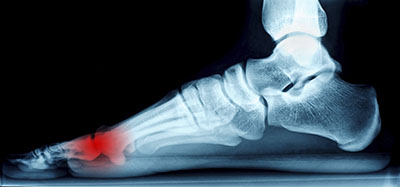
The pain caused by Morton’s neuroma is typically experienced at the ball of the foot. Many have described the sensation as feeling like they have a pebble stuck in their shoe. Because of this, those with the condition may find walking to be more difficult and uncomfortable. They may also experience a numbing or burning sensation in the foot. One of the most common factors that influence the development of Morton’s neuroma is improper footwear. Those who generally wear tightly fitted shoes or shoes with higher heels are more at risk at getting Morton’s neuroma. Having a foot abnormality may also increase the risk of getting this condition, as it may cause instability, thus adding more pressure onto the nerves of the foot. Certain foot conditions such as bunions, hammertoes, and flat flat feet have also been known to lead to Morton’s neuroma if not treated promptly.
Athletes have a tendency of getting Morton’s neuroma due to repetitive motions and pressure placed on the ball of the foot while running or jumping. Morton’s neuroma may also develop as a result of an injury to the foot.
To learn more about Morton’s neuroma and treatments that work best for your case, consult with your podiatrist.
Condition:
Neuroma is a benign swelling or scarring of a small nerve that connects two of your toes that provides sensation. The area may be hot or very swollen and, just as mysteriously, the symptoms can disappear and reappear. At first, the pain is only present when weight bearing in tight shoes. As it gets worse, spontaneous shooting pains, often like electric shocks, can be felt even when you’re off your feet.
Symptoms:
The symptoms can consist of pain or numbness, usually affecting the third and fourth toes. Neuromas frequently start as a numbness or tenderness in the ball of the foot. This is the area just behind the base of the toes. As the swelling increases, pain and strange sensations such as numbness, burning and tingling in the area can radiate out into the toes or back into the foot.
Treatment:
Dr. Antero may apply special padding to the foot to take the pressure off the area. An injection of an anti-inflammatory medicine (cortisone) or a nerve sclerosing solution may be placed surrounding the nerve to decrease it sensitivity and to try and decrease the the swelling of the nerve. If these treatments are not effective at calming the neuroma, Dr.Antero may dispense orthotics to help control the abnormal mechanical structure of your foot. By preventing the arch from dropping, the nerve will not be as distracted.
Prevention:
Anything that stretches and pulls the nerve will aggravate the condition. For instance, wearing high heels aggravates neuromas in three ways. First, the higher heel will push the toes up from the rest of the foot and cause the nerve to tighten and pull harder against the tight ligament. Second, the tight toebox squeezes the front of the foot together leaving less space between the metatarsal bones for the nerve to rest. Finally, the body weight is put more on the ball of the foot, increasing the pressure on the nerve.



